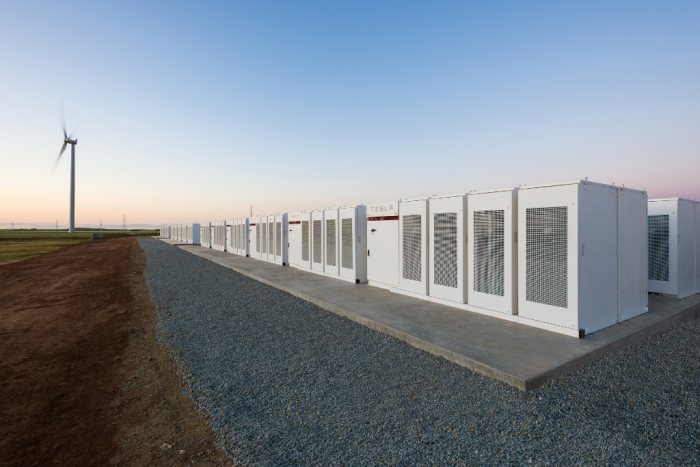
Image via Hornsdale Power Reserve
The official opening of Tesla’s Powerpack battery project in South Australia demonstrates how rapidly large-scale energy storage can be rolled out says the Clean Energy Council.
The project, known as Hornsdale Power Reserve, was fully installed by November 23. It was then subjected to testing, including the first charges and discharges into the grid, before the formal launch last Friday.
“Our energy system is changing fast, and the energy storage installed next to the Hornsdale 3 wind farm shows just how fast modern solutions can be delivered to meet the challenges confronting our ageing power grid,” said Clean Energy Council Chief Executive, Kane Thornton. “Just as amazing is the power of social media to get things moving, given it is now less than a year since a deal was half-brokered between two tech billionaires on Twitter.”
The role of what’s become informally known as the “Big Battery” is to help to stabilise the South Australian electricity grid and assist in preventing load-shedding events. The nature of the system enables it to dispatch large amounts of energy very quickly.
A portion of the battery’s capacity will also be dedicated to electricity market trading – storing electricity generated by the 315MW Hornsdale Wind Farm when demand is low and dispatching it during peak demand periods; reducing the need for costly gas-fired peaking plants and putting downward pressure on wholesale electricity prices..
Mr. Thornton congratulated project partners Tesla, Neoen and the South Australian Government on successful completion of the 100MW/129MWh battery system, which he said would help secure South Australia’s electricity supply this summer.
“This project has helped to elevate South Australia onto the world stage and highlight the remarkable progress of renewable energy in the state. I suspect it will be the first of many energy storage projects in the future, as the cost of energy storage continues to fall.”
“History In The Making”
To say South Australian Premier Jay Weatherill was somewhat chuffed by completion of the project would be quite an understatement.
“South Australia is now leading the world in dispatchable renewable energy, delivered to homes and businesses 24/7,” said the Premier on the day of the opening. “This is history in the making.”
Tesla said it hopes the completion of what is currently the world’s largest lithium-ion battery system in record time provides a model for future deployments around the world.
“The South Australian Government should be congratulated for ensuring their energy supply is not only sustainable, but will help solve power shortages, reduce variability, and manage summertime peak load,” stated the company.
Tesla may not hold the crown for the world’s biggest lithium-ion battery for long, with other projects in the pipeline that will eclipse it. Bloomberg reports South Korea’s Hyundai Electric & Energy Systems Co. is building a 150MW facility in Ulsan that should go live in a few months. Even bigger is a 300MW battery system proposed for a site in California, but that isn’t expected to be fully completed until 2023 .

 RSS - Posts
RSS - Posts



I hope the battery is charged just at present the grid in South Australia is requires approximately 1020 MW. Gas is producing 1054 MW and the wonderful 1535 MW wind turbines are producing 23 MW about 2.2 % of the energy needs. I wonder how long it will take to charge the battery with green energy?????
Who cares ? If Malcolm Turnbull and his Liberal Party colleagues are against it then it must be good !
Hello Thomas
Well it takes about 1 hour to charge the battery assuming a one C charge rate. Because of its location, most of the energy used to charge it will come from wind farms as the transmission line it is connected to spends the large majority of its time exporting wind energy to Adelaide and then potentially to Victoria. But if you look at it at the state level, then the state will always be producing fossil fuel electricity because the state government requires multiple gas generators to be in operation at all times. So looking at it that way, the battery will never be entirely charged with green energy, unless circumstances change.